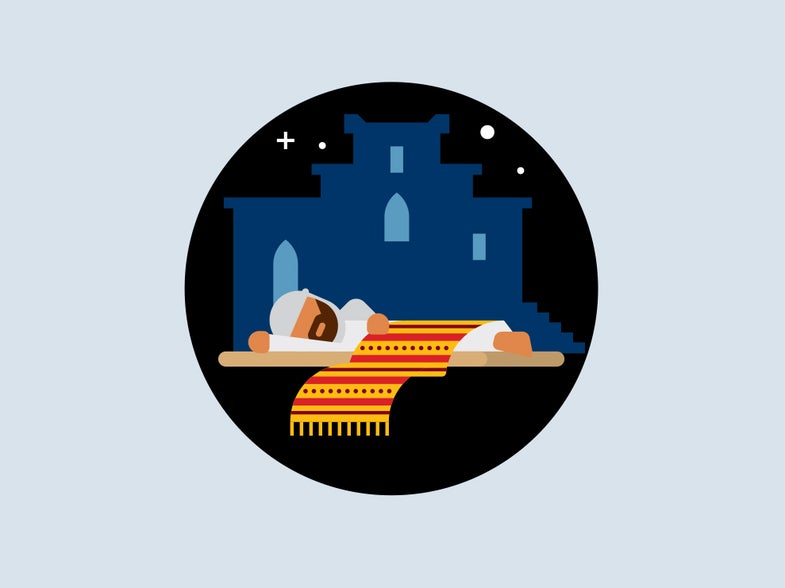It’s dark and you’re far from home. Where do you stay? Back in the day, you had to know somebody. Nowadays your smartphone does. When night falls, every vagabond—old or new—requires a roof over their head and a bed under their bottom. But where we stay has drastically changed over time. Now uncovering a place to crash can happen in a matter of moments.
Prehistory-present: A pal’s place
Staying at a friend’s house—or cave, or loft, or cave-loft—is a tradition as old as friendship itself, and that practice is new again thanks to the sharing economy. Services like Airbnb help you find a room in which to crash.
400-1300: Monastery
For the dutiful Christian making his pilgrimage to the holy lands of Jerusalem (in 400) and Santiago de Compostela (in 1000), monasteries were literal lifesavers. Food, shelter, and a lot of awkward chitchat with the monks at breakfast.
1200-1500: Caravanserai
Twelfth-century Silk Road traders relied on a network of caravanserais (roadside compounds). Doorways wide enough for camels and open courtyards offered sleeping bays for traveler and animal. A great place to resupply and trade trinkets.
1912: The Titanic
On its maiden voyage, RMS Titanic was the height of ocean-liner luxury. As the largest movable object in the world, it included a gym, pool, and squash courts. Airplanes caused ocean-travel popularity to sink not long after the Titanic did.
1900-2000s: Hotel systems
Thousands of miles of U.S. highway constructed in the 20th century attracted travelers, fueling the peak of hotel creation in the 1920s. Thirty years later, hotel franchises were booming, providing a uniform and recognizable service across the country.
1990: Ice hotel
Every November, Swedish workers carve 2-ton chunks of ice from the Torne River to make a 55-room hotel. Travelers dine at ice tables with frozen cups, and sleep on ice slabs (in fur or sleeping bags). Bathrooms consist of less…melty material.
This article was originally published in the January/February 2017 issue of Popular Science, under the title “Where we’ve slept.”






